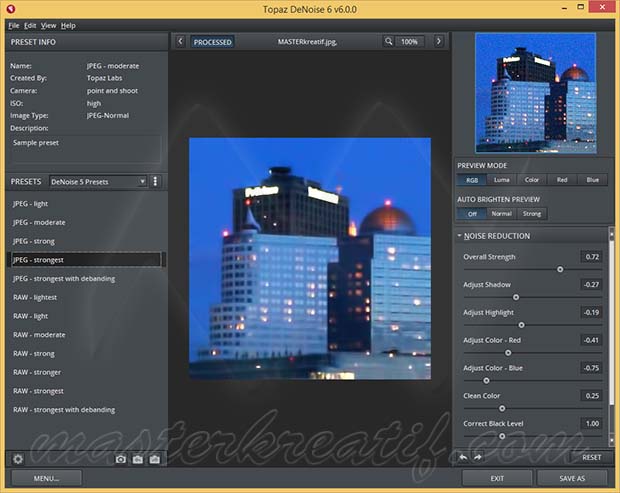Topaz Denoise 5 Full Crack Internet

Topaz DeNoise 6 + Serial Number (Win – Mac OS) Topaz DeNoise 6 + Serial Number (Win – Mac OS) is a popular photo-editing and image retouching tool designed specifically to remove noise from images and enhance photo quality.
“Expanse of the Night.” Shot with a Nikon D750 with a Samyang 14mm f/2.8 IF ED UMC Aspherical Nikon AE (Rokinon, Bower, Walimex: they’re all the same, just rebranded). 15 s at f/2.8 and ISO 6400. Method Full disclosure: I’m not affiliated with any brand or software developer. I’m just a regular landscape photographer who happens to shoot Nikon. In fact, I would love to learn which current software reduces noise the best myself.
There are many tricks and tools available to enhance the quality of our images, about as many as there are genres in photography. I'm choosing to compare those tools on a nightscape image, because its typical usage scenario is almost always the same. In which other genre do you max out the ISO as well as the shutter speed for almost every shot? Anyway, raw converters and Photoshop plugins will help to reduce noise, but what we really want is to increase the exposure of the stars in these nightscapes without increasing the noise. We want to increase the signal-to-noise ratio.
I’ll touch on that in another article. But we can’t expose for the stars any longer, since the rotation of the Earth will stretch them from pinpricks to streaks across the sky. To avoid star trails, there’s a rule of thumb going around the internet, but I’ll warn in advance that there’s more to it. Shutter Speed To make a long and complicated story short: An increased exposure doesn’t necessarily mean more and brighter stars. If you can follow along, this next part may appeal to you. Don’t worry if it’s too complicated.
Just skip to ISO and we’ll catch up there. The rule of thumb is the 600-rule, which states that if you divide 600 by your focal length on a full-frame camera, the maximum shutter speed in seconds pops out at the other end of the equation. So, if I shoot at 14mm, this “rule” will tell me that I can expose for up to 43 seconds until the stars appear to trail. While this may be the case when your composition includes either celestial pole, it is definitely not the case when you capture the galactic core of the Milky Way. Even a shutter speed of 20 seconds with a 14mm lens on a full-frame body is really pushing it in terms of preventing star trails. The 500-rule is a better rule of thumb, but for the sake of the argument, think more along the lines of a 300-rule if the Milky Way is the subject for your full-frame. Think of a star that at the beginning of the exposure is in one place.
As it progresses along the night sky, its image is projected upon the camera sensor. Prezentaciya moyo hobbi na anglijskom yazike youtube. The prodigy music for the jilted generation flac torrent full. A photodiode, a piece of a pixel on a camera sensor, translates the brightness of that star into an electric charge. The electric charge recorded over the exposure time multiplied by the ISO-setting is a measure for how bright that star actually is. Let’s say a pixel recorded about 30% of its capacity. Now, consider that at the end of the exposure, our planet has rotated and the sky seemingly shifted one pixel. And it too records a value of 30%. While both record a value of 30%, neither of those will ever reach 100%, because of Earth’s day and night cycle.

ISO The camera used to capture an image to test the capabilities of noise reduction software was the, with a native ISO range of 100-12,800. Above that range, the signal will be amplified once it's been recorded by the sensor. At any lower setting than 100, that signal is attenuated.